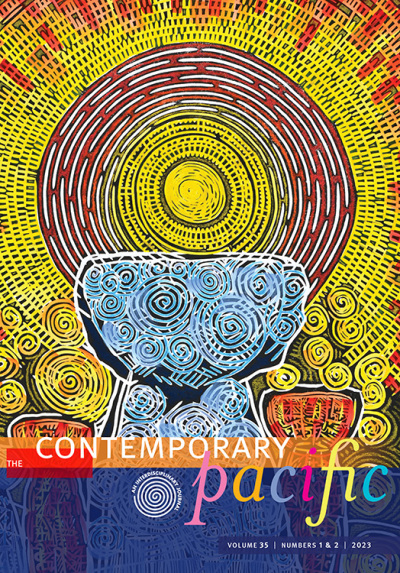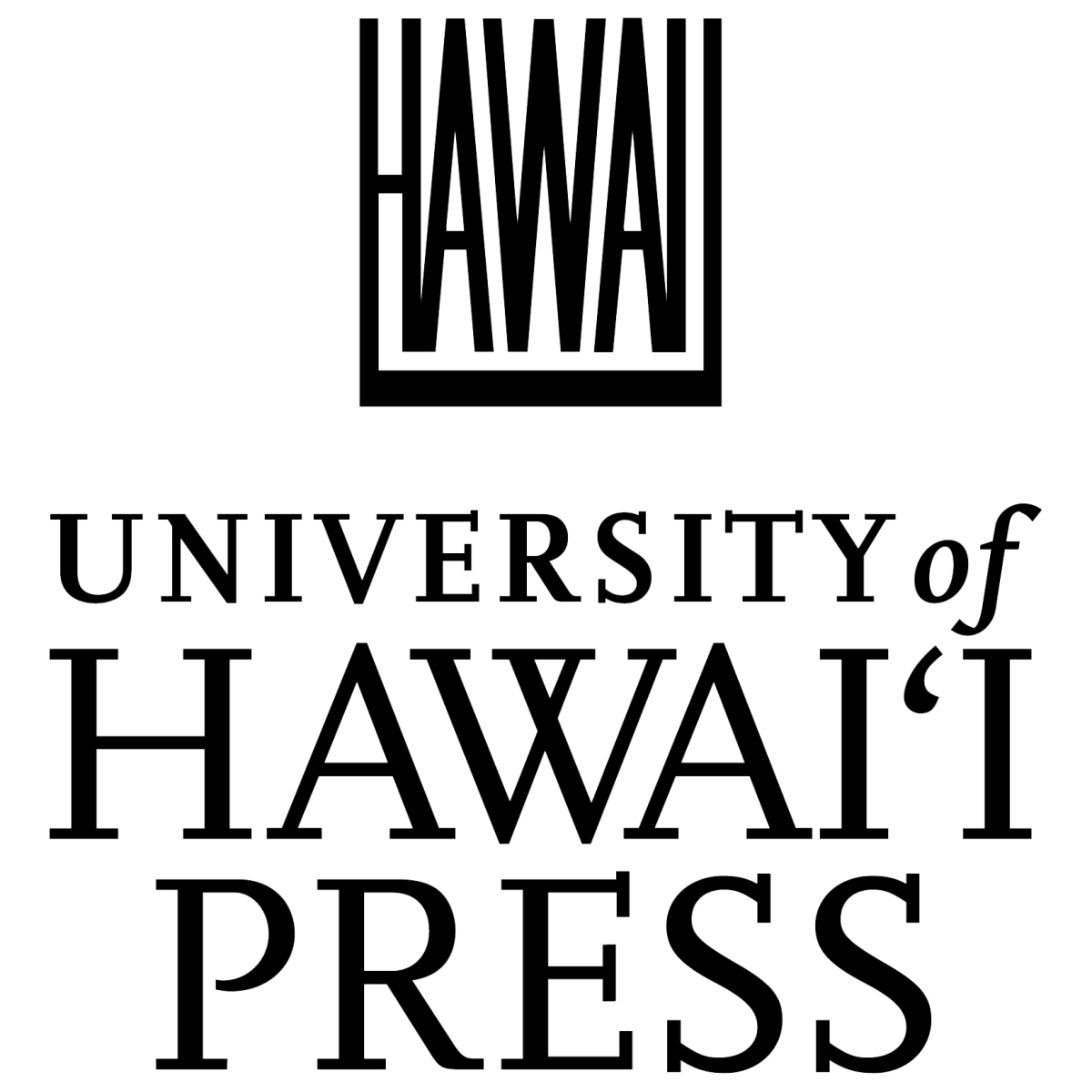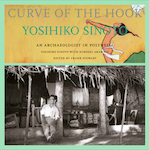Author Interview: Brij Lal
Published since 1989, The Contemporary Pacific has featured hundreds of authors from across disciplines and incorporated a wide range of genres, including peer-reviewed research articles, political reviews, resource essays, and dialogues covering issues of profound concern to the region and the world, as well as book reviews, art features, and even the occasional poem. All of these pieces have moved through a robust editorial process and reflect the authors' unique experiences in communicating their expertise and creative and critical scholarship to a broad audience. Launched in January 2020, this new section of our website features interviews, one per month, with the scholars and artists who have published in our pages.
Check out our innaugural 2020 author interview with Margaret Mutu, professor of Māori studies at the University of Auckland and the longest-serving political review writer in our journal's history! Or, check out our March 2020 interview with Greg Dvorak, Professor at Waseda University’s School of International Liberal Studies and Graduate School of International Culture and Communication Studies, or our April 2020 interview with ku'ualoha ho'omanawanui, Professor of Hawaiian literature in the English Department at the University of Hawai'i at Mānoa.
INTERVIEW WITH BRIJ LAL
MILILANI GANIVET (MG): Congratulations on your recently published book Levelling Wind: Remembering Fiji (2019)! In an interview conducted by Vilsoni Hereniko for The Contemporary Pacific (TCP), you said: ‘‘I don’t see myself being in academia for very long,’’ yet here it is more than fifteen years later and you’re still exploring new intersections and expanding scholarly visions (Hereniko 2002, 184)! I reckon you find the pursuits of academic life have suited your interests after all? Your recent books have all contained deep reflections on your career and work, but can you walk us through some key moments in your scholarly journey?
BRIJ LAL (BL): At the time of my interview with Vilsoni, I had been in academia for more than twenty years. I was getting deeply disillusioned with the culture in the academy: creeping managerialism in academic administration, endless accounting to bureaucrats, the need for relevant, outcome-oriented research, the urgency to get research grants, the econometric measures of research output on an annual basis. This was not the culture I had entered all those years ago. I wanted to leave The Australian National University (ANU) and return to Fiji, but coups and subsequent convulsions convinced me that I could write and comment more freely by being outside the country. Then, in 2009, my wife and I were banned for life from returning to Fiji because we were deemed a threat to Fiji’s national security by the military government of the day. It is now ten years since the ban. But that’s the price you pay for standing up for the values of democracy, the rule of law, and freedom of speech in a military dictatorship. I finally took early retirement from ANU in 2016 and left Canberra permanently to live in Brisbane. I know no one here beyond my extended family. That gives me privacy and time to do my reading and writing off of the academic treadmill. The freedom is liberating. Writing has been my passion, indeed, obsession, for all my life, whether I wax in academia or outside of it. Nothing for me is really real until it finds expression in words. I create my own texts rather than slavishly follow someone else’s, I write on subjects that interest me, I dance to the tune of my own music. I write to bear witness to my own time and place. I publish where I know I will be read. I find that immensely liberating. And, even more, I love writing creatively and imaginatively about pasts that have no written records and where memory is not properly archived. I have tried to do that in Mr Tulsi’s Store: A Fijian Journey, one of my most widely read books. It was judged by the Kiriyama Prize Committee of San Francisco, I am happy to say, as one of Asia Pacific’s Ten Notable Books for 2001. I did that book on the side; universities have no place for that kind of exercise. As I recall, Joseph Conrad once wrote: “I must live till I die.” I will write until I die.
MG: For most of us, it seems like TCP has always been around—in fact, it celebrated its thirtieth anniversary just last year. In the span of thirty years, the journal has published more than three hundred scholarly articles, as well as the work of hundreds more authors in its other sections. It has featured over thirty-five Pacific Islander artists and has become a standard academic reference for Pacific-related topics and scholarship. It seems appropriate and timely to look back on its early beginnings and aspirations. As its first editor, and one of the founding members of the journal, can you tell us a bit more about how it came into existence? What kinds of spirit and aspirations were behind the endeavor at the time? Did you foresee its perennial impact?
Founding Editorial Team: Robert Kiste, Terence Wesley-Smith, David Hanlon, Brij Lal and Linley Chapman, 1989.
BL: I have a very clear memory of how TCP came about. Bob Kiste, then director of CPIS, had a new, wonderful monograph series that was dedicated to publishing cutting-edge research on the Pacific. I was convinced we could do more, and I put the idea of a scholarly journal to him. We had the Journal of Pacific History published from ANU. It was true to its name. Then there was Pacific Studies, published by Brigham Young University: good but a bit of a mixed bag. I felt there was a pressing need for a journal devoted to the contemporary Pacific—broad-based, multidisciplinary, addressing real problems but written accessibly in the “intelligent language of ordinary discourse,” as I recall from memory. And it had to publish top-quality scholarship. There was no compromising on that. It was wonderful that a number of colleagues, whether in CPIS or associated with it, agreed, among them David Hanlon and Terence Wesley-Smith. We had a great manuscript editor in Linley Chapman. We were the “Young Turks,” full of enthusiasm and confidence. Bob was convinced and gave us the go-ahead. Bob was wonderful in that way: he would back you to the hilt if he believed in you. And he did. I am very pleased to have been associated with the journal. It has more than fulfilled its founding promise. It is now an integral part of the intellectual apparatus of Pacific scholarship, indispensable. It has expanded over the years in tune with the intellectual needs and aspirations of the time. That is as it should be.
MG: I suppose each editor aspires to leave their own imprint on the journal—really any journal. Looking back, what was important to you? As the inaugurating editor, did you set goals for the journal? What were you trying to accomplish?
BL: I have partly answered this question in my previous response. I think we all wanted a journal of international distinction, starting at the very top. It did not come as a surprise to us that TCP won the Best New Journal Award for 1990 given by the Association of University Publishers. So, it paid off to aim for the highest standards of publishing in the field. And as our reputation spread, so did the range of contributors from around the world. TCP was the place to publish if you were working on the contemporary Pacific. And so it has remained.
MG: Having been present in the journal’s dawn age, I wonder what you might think about how the journal has evolved over time? Are there particular crosscutting intellectual exchanges that you have been tracking over the years?
BL: TCP has continued to publish research in the social sciences and humanities as we envisaged at the founding of the journal, but in recent years, it has also broadened its scope. More attention has been paid to cultural issues, to art, to topics one might consider to be broadly in the domain of cultural studies. This is not an unexpected development. The field of Pacific studies itself has moved in that direction, and some of the newer researchers are its active practitioners. I welcome that, but I hope some of the original intentions of the journal will not be neglected. More than ever, we need a serious outlet for scholarly research on things—political, social, economic—that matter. I say more than ever because some of the earlier journals that attended to these issues have ceased publication or appear irregularly. There is a need for publications that are broad-based and accessibly written that make sense of the bewildering world in which we live, and which reach out to the public beyond the academy.
MG: In your writing, you frequently and significantly reflect on the meanings and makings of Pacific history. What has your experience teaching Pacific history been like?
BL: Teaching is and should always be an integral part of the academic profession. It most certainly has been for me. During my time in the academy, I taught at several universities: the University of the South Pacific, the University of Papua New Guinea, the University of Hawai‘i at Mānoa, and at ANU. As a teacher, you have to read widely, keep up with the literature, and then communicate all of that knowledge to students in an interesting and engaging way. I think teaching makes you a better communicator, a better writer. During my time at ANU, I was required to focus on honors and graduate students. This was a most rewarding challenge. Teaching at this level requires different skills. Students are vulnerable. They are uncertain as they enter the world of individualized research for the first time. Your task is to help them define the problem they want to research and give them the freedom to pursue their interests. You are a guide, a mentor, and instruction does not stop in the tutorial or in the seminar room. You are introducing students to the culture of the academy. It is a serious responsibility. I often took my graduate students on long walks in the Canberra bush, for drives in the country, had them home for meals. All of these things help to break down barriers, build confidence. Students appreciate the extra mile you went. It came as no surprise to receive a Top Research Supervisor Award from ANU. And it is pleasing that many of my graduate students have become good friends of mine.
MG: Two books you have recently published (Political Life Writing in the Pacific: Reflections on Practice, coedited with Jack Corbett, as well as your monograph Intersections: History, Memory and Discipline) stress the significance of biographical life-writing for disciplinary history. Can you share some of your thoughts about that?
BL: I have always been interested in the lives of people rather than in the history of things or objects. History that is dry and desiccated or excessively theoretical does not move me. I thrill to the particularities of the human experience. I use the lives of people as a prism to explore the patterns of whatever problem I am exploring. How do human beings caught in the ferment of change react to developments around them, to the challenges they face? Are there things you learn about the deeper impulses of human behavior? If you are a political leader, the decisions you make may have huge consequences. This fascination with human lives, with storytelling, is as old as human history.
MG: Having written about the importance of both public and private lives in understanding broad currents in Oceania’s histories, do you have any advice about how we might all reflect on the relationships between our personal and professional lives?
BL: Introspection was once frowned upon, discouraged. The author was supposed to be objective, dealing with observable and verifiable facts. The use of the perpendicular pronoun was a no-no. But that is no longer a fashionable view. It is very important to be aware of the values, understandings, and assumptions you bring to bear on your scholarship. Remember that facts do not speak for themselves, if they ever have. They only speak when spoken to, and they answer questions you ask them. It is very important to tell the readers where you are coming from, so that they can then understand why you have said such and such. I have written two full-scale biographies, both of Indo-Fijian leaders, and I have been upfront with my readers about what my own “position” is. As a biographer, it is not my role to pass judgements on my subjects but instead to understand the promptings of their behavior, their responses to people and events, and, in doing so, to lay that bare before the reading public so that they can make their own judgements. Humility is a very useful virtue to have. I remember something that Theodore Roosevelt once said, “It is not the critic who counts. Not the man who points out how the strong stumbles or where the doer of deeds would have done them better” (Roosevelt 1910). The credit, he says, really belongs to the man “who is actually in the arena, whose face is marred by dust and sweat and blood, who strives valiantly, who errs again and again, who spends himself in a worthy cause, who, at best knows, in the end, the triumph of high achievement, and who is at the worst, if he fails, he fails daring greatly.” Yes, I appreciate the humility of the observer who does not sit in judgement but who observes and seeks to understand.
MG: In an interview for TCP, Albert Wendt suggested: ‘‘It's all fiction—that's if you define fiction as something that you make up. I mean, there is a lot of fiction in a history book, you invent and select. But you justify it by saying you are basing it on certain historical facts that you have discovered. When you've done all the research and you sit down and write it up, the process is like writing a novel. It's based totally on selection, your ideology, and what you as a person deem important. The same process is true for the novel. For me now, there is no difference between autobiography and fiction. There is very little difference between fiction and nonfiction. It all depends on the way you tell it’’ (TCP 1993, 130). As a historian, you have mentioned the importance of imagination and fiction in your upbringing, and you have published a piece of creative critical scholarship in TCP (Lal 2009). Given all of this, do Albert Wendt’s words evoke anything for you?
BL: To some extent, but not entirely. In historical or any other scholarship, you cannot “invent” facts. You can’t say something happened on a particular day when it clearly did not. You begin with a given set of facts—a body of evidence, written and oral—and work with it. Of course, you will sift through the evidence, use your imagination to re-present it, but all within a defensible framework. In creative writing, the limits are set by the writer’s imagination, not by a body of verifiable evidence. In creative writing, I have found that sometimes the conclusion is not known until the very end. That is not so in scholarly writing. The gap between autobiography and fiction may not be great, as Wendt suggests, because in writing about one’s life, there is often deception, invention, exaggeration. But there is an important difference between historical and fictional writing. And that should not be blurred. As far as possible, history deals with the realities of lived experience; fictional writing deals with the world of the imagined experience. But that is not to say that great fiction cannot get to the essential truth of a matter better than factual scholarship can.
References: Corbett, Jack, and Brij V Lal, coeditors. 2015. Political Life Writing in the Pacific: Reflections on Practice. Acton, ACT: ANU Press; Hereniko, Vilsoni. 2002. From the Sideline: An Interview with Brij V Lal, Historian and Constitutional Commissioner.” The Contemporary Pacific 14 (1): 168–184; Lal, Brij V. 2019. Levelling Wind: Remembering Fiji. Acton, ACT: ANU E Press; Lal, Brij V. 2011. Intersections: History, Memory, Discipline. Acton, ACT: ANU E Press; Lal, Brij V. 2009. A Well with No Water. The Contemporary Pacific 21 (1): 73–89; Lal, Brij V. 2001. Mr Tulsi’s Store: A Fijian Journey. Acton, ACT: ANU E Press; Roosevelt, Theodore. 1910. Citizenship in a Republic. Speech, Paris, France, 23 April. Available on Theodore Roosevelt Center website https://www.theodorerooseveltcenter.org/Learn-About-TR/TR-Encyclopedia/C... [accessed 6 April 2020]; TCP, The Contemporary Pacific. 1993. An Interview with Albert Wendt. The Contemporary Pacific 5 (1): 112–131.
ABOUT THE AUTHOR: Brij Lal is a professor emeritus at The Australian National University, from which he retired in 2013. He taught Pacific and world history at the University of Hawai‘i at Mānoa from 1983 to 1990 and has visited the campus several times subsequently. He now lives in Brisbane, Australia, and reads and writes away from the academic treadmill.
An MA candidate in Pacific Islands Studies at UHM's Center for Pacific Islands Studies, Mililani Ganivet has served as an editorial intern with The Contemporary Pacific since spring 2019. Sustained by the Pacific Ocean and hailing from Taravao, Tahiti in French Polynesia, Mililani's research interests include the histories and legacies of nuclear tests in French Polynesia and in wider Oceania. Mililani proposed the idea of this interview series to the TCP Board and was instrumental in seeing it launched.








